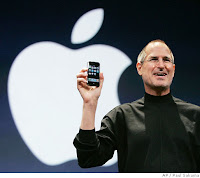
In a recent interview, Sir George Martin, The Beatles' producer during the 1960s said that he doesn't listen to MP3s or iPods because he doesn't like how the highly compressed digital files sound. While digital music producers may sacrifice sound quality in favor of smaller file sizes, the difference in quality is generally hard to recognize for casual listeners.
MP3s and other audio file formats are created by minimizing the amount of data an audio file requires by removing specific parts of the file that most people are unable to hear. This results in a much smaller audio file, but a slight deterioration in the quality of the end product. This small reduction in quality isn't perceptible by most people, but people like Martin, who have spent their entire careers honing their sense of hearing, claim that the digital files are hard to listen to.
Because the creation of MP3 files relies on a quirk of humans' auditory systems, it is unlikely that the quality of highly compressed audio files will increase as technology evolves. Audiophiles will likely have to wait for a new type of file compression system before any great change in the quality of digital audio occurs. Until then, those who can't stand how digital music sounds, like Sir George Martin, will have to continue to listen to their vinyl record collections.



